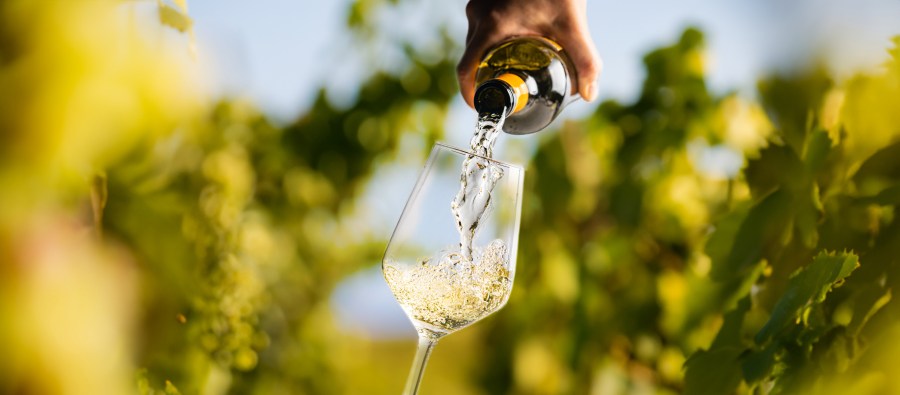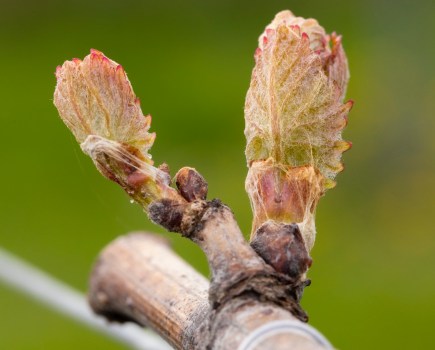Getting started
Establishing a new vineyard is an expensive process and whether you are proposing to grow grapes to sell or go the whole hog and make and sell wine, considerable amounts of capital, both fixed and working, will be needed.
It is better to know in advance how much might be needed. Many of the really important decisions (assuming you have already selected the site) can be taken sitting at the kitchen table and writing the answers down. Almost all of those really important decisions can never (or only at great expense) be changed: varieties, clones and rootstocks, row width, vine density, pruning and training style – all need deciding before you can order your vines. Many of these decisions, especially the choice of varieties and the vine density, dictate the style, and often the quality and certainly the quantity of the wine you will produce and will almost certainly have an impact upon the long-term viability and financial sustainability of the whole enterprise. For the novice grower, it pays to get advice and get these decisions right.
Business plan
I am amazed how few people, when they make initial contact with me to say “I want to plant a vineyard, can you help?” have actually considered making a business plan, even a back of the envelope one. I usually start with the three Ws: What wines are you planning to make? Where are you going to sell then? Who is going to sell them? The really bad answers are: “the best English wine ever”, “high end hotels and restaurants” and “I’ve spent my life selling things and that will be no problem”. This highlights a lack of knowledge regarding the uncertainties of wine production in GB, of the buying policies and practices of the on-trade, and that selling widgets is not the same as selling bottles of wine. A business plan, however rudimentary, is therefore a good idea, especially as it requires some investigation into the finances of the winegrowing business.
Having said the above, whilst many of the costs are known or can be estimated with a fair degree of certainty, the really important ones are hard to pin down. What will your yields be over time be? Will your vineyard be in the top quartile of GB vineyards where the 2016-2023 average yield is 10.0 tonnes/ha? Or will you be nearer the ‘all vineyards’ average of 5.6 tonnes/ha? (See the 2020 Yield Survey).
What about wine prices? Waitrose Cellar lists 42 English and Welsh sparkling wines with the top 50% averaging £36.00 a 75cl bottle and the bottom 50% averaging around £27.50 a bottle. Many of the costs of putting a wine on the shelf are not related to the retail price – vineyard establishment costs, growing costs, yields, winemaking costs and of course Excise Duty. All cost much the same whatever the wine is sold for and greatly affects how much the producer retains after all expenses are met. In the examples above, the producer’s margin for the £36 bottles is around £10 a bottle, for the £27.50 bottle around half that. In working out net returns, it pays to be both realistic and a little bit optimistic as well.
The other major factor in working out returns is taking on board the fact that many of the most successful vineyards in GB sell a goodly proportion of their wines direct to the public. By doing this of course, you can achieve not only maximum returns, but also create loyalty and interest which generates lots of positive PR and helps spread the word.
I well remember (in the days when I ran my own vineyard) conducting a ‘how did you hear about us’ survey one week in the middle of our busiest tourist period and was surprised to find that well over two-thirds of those who we surveyed said either ‘word of mouth’ or ‘just passing by and saw the signs’ – neither of which we had any control over! What we did soon realise was that winning prizes and awards with our wines was a very positive sales force and not only got people to the door, but also allowed us to charge as much as we thought we could get away with, safe in the knowledge that buyers were getting top quality. In my particular case it helped that in our second vintage (1980) we won the Gore-Browne Trophy for the ‘English Wine of the Year’ and that Hugh Johnson, who had been chairman of the judges, arranged for the Sunday Times Magazine to send their new wine reporter down to interview us (a pre-MW Jancis Robinson – I wonder what happened to her?). That is the sort of publicity you cannot buy.
Selling direct to the public is not for everybody or every vineyard and it takes time, effort and investment to create the right ambience to persuade people to part with their money. But given that the producer margins from ‘farm-gate’ sales are at least three if not four times those earned from selling to the on-trade (restaurants, hotels, clubs and pubs) it is very well worth doing.
I would say that most smaller producers (15,000-25,000 bottles per year) who are in a suitable location with suitable premises, should be able to sell at least 50% of their output direct, and in time, possibly more. This level of direct sales should put a very good base in their earnings from their vineyards, plus they will have the opportunities of side-selling tours, tastings, and events.
Of course, for the larger vineyards who will find it difficult to sell 50% of their output from their premises, they can still sell direct using the internet and a delivery service although their costs will be higher. For those producers not in a suitable location and for owners who have no wish to get involved with direct-to-consumer sales, then using others to sell on their behalf is their only other option, and it is an expensive one.
Working capital
Having been involved with establishing vineyards of different sizes, for different reasons and of different complexities, the one common thing that nobody ever gets quite right is the amount of working capital they need to get a vineyard up and running, to produce their first crops and eventually get their wine on the market. As I have said, many of the start-up costs can be estimated with some degree of accuracy or you can find out from suppliers and contractors how much it is going to cost to plant your vineyard, but don’t forget infrastructure costs such as drainage and fencing, of access roads and loading pads, water tanks for spraying and hedging and windbreaks. They are all often necessary and none are free.
One of the most common mistakes is to underestimate the machinery requirements (even for a modest vineyard) plus of course the covered secure space to garage them in. Whilst a lot of people think they will get away with buying one decent tractor onto which they will attach all the equipment they need, most find that the vagaries of the British weather dictate that the ideal day they want to mow, or weed, or trim is exactly the same day that they want to go spraying or to de-leaf.
In my experience even quite modest sized vineyards end up with dedicated tractors carrying their sprayers, their weed control equipment and their mowers. Their mower, being the easiest implement to uncouple and set on one side, can then be fitted with their vine trimmer and de-leafer, assuming the vineyard is big enough to warrant such implements. A full set of equipment for even a modest vineyard can cost £150,000 or more.
Vineyard establishment
Establishing a vineyard and running it until first cropping or first wine sales will depend on many different factors, but excluding the cost of your land, you should allow £40,000 per hectare to plant and at least £25,000/ha to first cropping (usually in year three). After this it’s around £12,000/ha every year for looking after and managing the vineyard.
Finance for stock
Currently, GB wine producers are facing some of the highest stock levels they have ever seen. Between 2018 and 2023, a total of just over 75 million bottles of wine, still and sparkling, have been produced from GB vineyards. In the same period, sales of all wines, as surveyed by WineGB, have amounted to nearly 41 million bottles. Assuming the 2023 harvest has barely started to sell and allowing for time taken for sparkling wines to age before they are ready to be sold, it is my estimate that producers are sitting on around 50 million bottles of wine, of which sparkling accounts for 40 million bottles or around six years’ worth of sales.
In case you think this is excessive, the current stock levels in Champagne are around four and a half year’s stock for all wines (and growing as sales of Champagne are falling) and for prestige cuvées they are at least double that. Six year’s stock is therefore part and parcel of producing high-quality, bottle-fermented sparkling wines, especially ones produced in a climate where acid levels are typically high (excellent for long-aged wines) and where quality undoubtedly improves as the years roll by.
But, what these levels of stock do mean of course is that they require significant levels of cash to be invested in stock that will take time to come to market. Estimating what the actual costs are can only really be guesswork as each producer will be very different. Secure storage will be needed, typically with air-conditioning and handling equipment must also be available. If you take a modest production level of say 6 tonnes per hectare and make an educated guess at both growing and wine production costs, the investment in stock per year per hectare would be at least £25,000, therefore for six years that’s £150,000 per hectare and possibly more, especially if using a contract winemaker and off-site rented storage.
Summary
Setting up a wine production business is a capital-intensive business and not for the faint-hearted. But you are building a business that with luck will last several, maybe many, lifetimes. The oldest GB vineyards are barely 70 years’ old and some are already being worked by third-generation owners. It will be fascinating to see what this industry looks like at the turn of the next century.
For more like this, sign up for the FREE Vineyard newsletter here and receive all the latest viticulture news, reviews and insight




